- Home
- About Us
- Products
-
Heat-Pump Dehumidifier DeAir
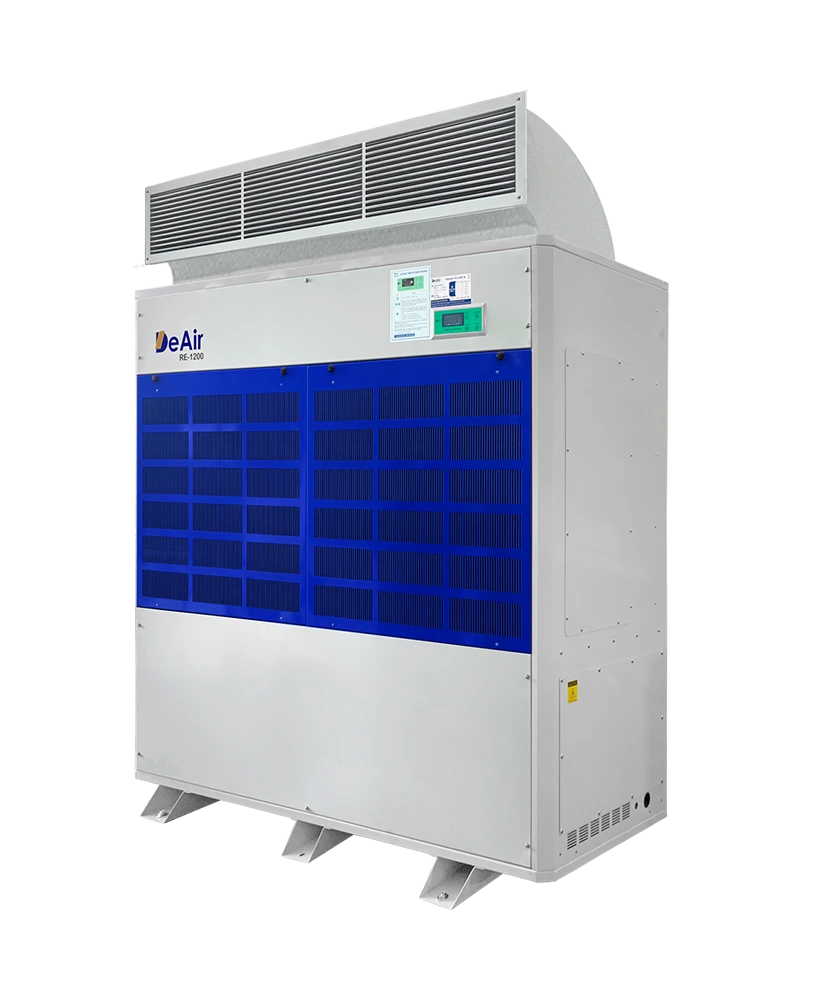 DeAir.RE
DeAir.RE -
Heat-Pump Dryer DeAir.RE-H
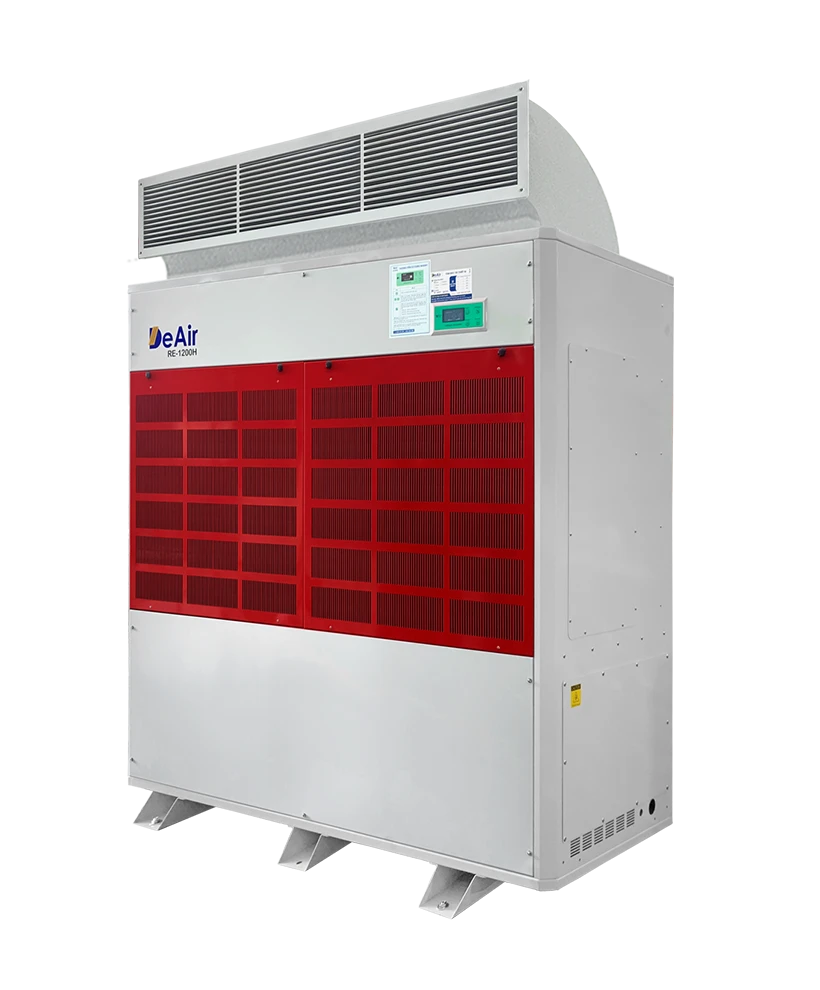 DeAir.RE-H
DeAir.RE-H -
Heat-Pump Stainless Steel Dehumidifier
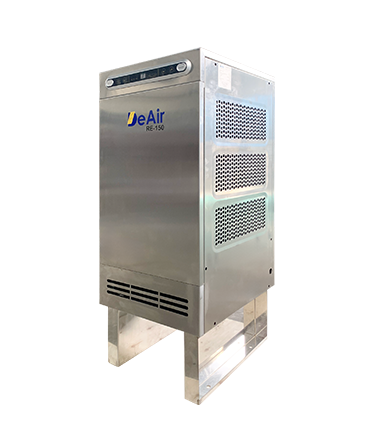 DeAir.RE-INOX
DeAir.RE-INOX -
Heat-Pump Isothermal Dehumidifier DeAir.CRE
 DeAir.CRE
DeAir.CRE -
Dezenno Dehumidifier
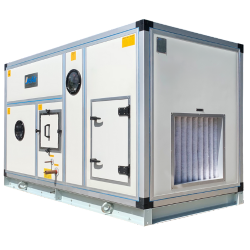 Dezenno
Dezenno -
Heat-Pump Ceiling Mounted Dehumidifier DeAir
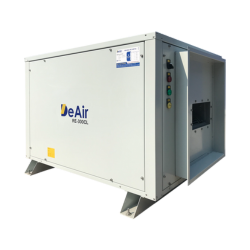 DeAir.RE-CL
DeAir.RE-CL -
Dehumidifier Olmas
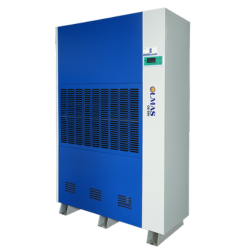 Olmas-OS
Olmas-OS -
Industrial Humidifier DeAir
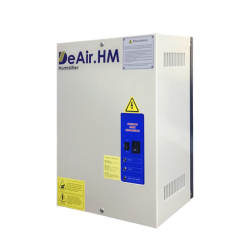 DeAir.HM
DeAir.HM -
Heat-Pump Dryer Daxwell
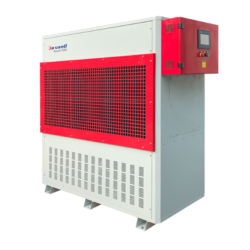 Daxwell
Daxwell -
Electric Duct Heater DeAir
 DeAir.Heat
DeAir.Heat -
Air Handling Unit Dezenno.MAX
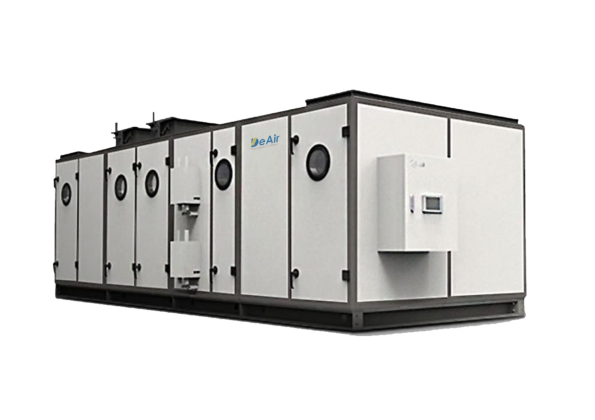 AHU
AHU
-
- Services
- Projects
- Warranty – Maintenance
- News
- Contact
AHU Application in Animal Husbandry: Improving Productivity & Biosecurity
13/05/2025
Application of AHU in Large-Scale Poultry Farming: Environmental Control & Productivity Improvement Solution
In the modern poultry industry, especially large-scale broiler farms with high flock densities (e.g. 500,000 birds per 2-month cycle), precise environmental control is key to optimizing health, welfare and production efficiency. Optimal temperature, humidity and air quality directly affect feed conversion ratio, growth rate and mortality rate of the flock. In this context, Air Handling Units (AHUs) are emerging as a comprehensive, integrated solution for climate management in poultry farms.

What is AHU and the Main Components in Poultry Farming?
AHU (Air Handling Unit) is the central device in the HVAC (Heating, Ventilation, and Air Conditioning) system. See more: What is AHU? Structure, Principle & Detailed Application | Dezenno Max
In poultry farming applications, AHUs perform many important functions to create an ideal living environment for livestock:
- Fans/Blowers: Move air through equipment and ductwork for efficient air distribution. Variable speed fans (VFDs) can optimize energy.
- Heat exchangers (Coils): Regulate air temperature using chilled water, hot water, or refrigerant. Heat pumps can be integrated for efficient heating and cooling.
- Filters: Remove dust, particles, and contaminants from the air. Various filtration options from pre-filter to high-efficiency HEPA filters meet stringent air quality requirements.
- Humidifier and dehumidifier: Adjusts air humidity to maintain optimal levels for the health and comfort of the birds.
- Mixing chamber: Allows mixing of return air with fresh air to optimize energy and air quality.
- Airflow regulator (Dampers): Controls the inflow and outflow of air, manages air pressure and ventilation rate.
AHU maintains the correct temperature (around 37.5°C for broilers, lower for broilers), humidity (50-60% for broilers, variable for broilers), air quality (reduced dust, ammonia, pathogens) and ventilation rate appropriate to the age and density of the flock.

Comparison of AHU and Traditional Ventilation Systems
Traditional ventilation systems in poultry farming often incorporate simpler components:
- Exhaust fan: Creates negative pressure to draw in fresh air and push out polluted air. Tunnel ventilation is common in hot climates.
- Natural ventilation: Uses wind and thermal forces through air inlets, blinds, or roof vents.
- Evaporative cooling panels: Use the principle of evaporation to cool the incoming air, most effective in hot and dry areas.
Here is a comparative analysis of the efficiency, cost and risk between AHU and traditional systems:
-
Environmental Control:
- AHU: Provides precise and consistent control of temperature and humidity, less affected by external weather conditions.
- Traditional: Efficiency is highly dependent on weather. The cooling capacity of the cooling pad decreases when humidity is high. Difficult to maintain stable conditions, prone to fluctuations.
-
Air Quality:
- AHU: With a suitable filtration system (especially the HEPA filter), AHU significantly reduces dust, ammonia and airborne pathogens. Creates a healthier environment, reducing respiratory problems.
- Traditional: Mainly relies on ventilation to remove pollution, limited filtration capacity. Dust can accumulate, pathogens can enter through unfiltered air.
-
Biological Safety:
- AHU: High-efficiency filtration system (HEPA) significantly reduces the risk of airborne disease transmission. Maintaining positive pressure inside the house can enhance biosecurity. This is very important in high-density farms.
- Traditional: Provides little protection against airborne diseases due to lack of effective filtration, leaving large-scale farms vulnerable to disease outbreaks.
-
Broiler Performance:
- AHU: An optimal environment leads to improved growth rates, better feed conversion ratios and lower mortality rates due to reduced stress and disease.
- Traditional: Environmental fluctuations negatively affect performance parameters, increasing susceptibility to disease.

What is the difference between AHU in livestock farming and traditional ventilation systems
Introducing AHU Dezenno.MAX manufactured by DeAir
DeAir Joint Stock Company is a unit specializing in the production of dehumidifiers, AHUs and HVAC equipment in Vietnam Nam. DeAir provides comprehensive industrial humidity control solutions and has over 20 years of experience in the field of temperature and humidity control.
Learn more about AHU Dezenno.MAX:AHU Dezenno.MAX
AHU brand Dezenno.MAX is a product of DeAir. This equipment is manufactured in Vietnam according to European standards, complying with BS EN 1886:2007, providing high quality at reasonable costs.
Some outstanding features of AHU Dezenno.MAX are very suitable for livestock applications:
- Case structure: High-strength compressed aluminum frame, thermal break configuration with 25mm or 50mm PU insulation panels. This provides excellent thermal performance, airtightness, reduced heat loss and minimal condensation. The benefits of the thermal cut-out configuration include increased equipment life, reduced operating costs and reduced risk of external condensation.
- Filtering: The Dezenno.MAX AHU can be fitted with various levels of filtration, including coarse filtration, medium filtration, fine filtration, activated carbon filtration and especially HEPA filtration. The ability to integrate HEPA filters (H10-H14) is a great advantage for improving air quality and biosecurity on the farm. Optional filter pressure gauge for routine maintenance.
- Coil Section: Maximizes cross-sectional area for high heat transfer efficiency. Cooling coil can incorporate moisture separator for high air velocity. Supports both chilled water and direct cooling (DX) systems. Corrosion-resistant material options such as copper or hydrophilic coated fins. Double sloped drain pan with insulation to prevent condensation.
- Fan and Motor System: A variety of high-efficiency fans (backward-curved blades, aircraft blades, Plenum fans) are available with AMCA certification. The motor can be selected as high efficiency type (IE2, IE3) and use Inverter/VFD to adjust the speed, optimizing energy. Spring/rubber isolator helps reduce vibration and noise.
- Heat recovery system: The heat wheel option helps to recover energy (both sensible and latent heat) from the exhaust air to heat/cool the supply air, significantly reducing the cost of heating/cooling the outdoor air. This technology is very effective, can reduce system capacity by about 30-65%.
- Humidifier/Electric heater: There are options of steam humidifier (electrode, ultrasonic) and electric heater to precisely control temperature and humidity as required.
Benefits of Using AHU (Dezenno.MAX) in Large-Scale Livestock Farming (500,000 heads)
For a broiler farm of 500,000 birds, investing in an AHU system like Dezenno.MAX brings outstanding benefits, directly affecting economic efficiency and sustainability:
- Excellent Environmental Control: The Dezenno.MAX AHU maintains stable and precise temperature and humidity throughout the entire house, regardless of harsh weather conditions outside. This reduces heat or cold stress on the chickens, creating optimal conditions for uniform and rapid growth.
- Highest Air Quality and Biosecurity: The ability to integrate high-performance filters, especially HEPA, to remove most dust, pathogens and airborne contaminants. This significantly reduces the risk of disease outbreaks and spread in high-density flocks, which is the biggest risk in large-scale farming. Improved biosecurity protects the flock and reduces economic losses.
- Improved Flock Performance: An optimal living environment and clean air make chickens healthier, eat better, resulting in faster growth rates, more efficient feed conversion ratios (FCRs) and reduced mortality. This directly increases farm productivity and profitability.
- Improved Flock Performance: An optimal living environment and clean air make chickens healthier, eat better, lead to faster growth rates, more efficient feed conversion ratios (FCRs) and reduce ... eat better, lead to faster growthlvetica, sans-serif; font-size: 18px;">Potential Energy Savings: Features such as thermal cut-out construction, high-efficiency motor options and VFDs, along with heat recovery, make the Dezenno.MAX AHU more energy efficient than older systems or those lacking this feature. Heat recovery can significantly reduce heating/cooling costs.
- Reduced Labor Costs: With advanced automated control systems, the AHU reduces the need for manual environmental adjustments, freeing up workers for other tasks.
- Reliability and Durability: Manufactured to high standards (EN 1886) with quality materials (high-strength aluminium frame, aluminium-coated steel/stainless steel), the Dezenno.MAX AHU ensures durability and a long operating life.
Investment Costs and Suitability for New/Existing Farms
The choice between AHU and conventional systems depends largely on investment and operating costs, especially farm size.
- Initial Investment Cost: The initial investment cost for an AHU system for a 500,000-chicken farm is forecast to be significantly higher, potentially several times higher, than for a traditional ventilation system. This includes the cost of large-capacity AHU equipment, extensive ductwork throughout the farm, complex control systems, and high-efficiency filters (especially HEPA). Estimates of AHU equipment costs for a 500,000-chicken farm range from hundreds of thousands to millions of dollars or more, while a traditional system can range from $100,000 to $500,000 or more.
- Operating Costs: AHUs can consume higher electrical energy due to large fan operation, powerful cooling/heating, and filtration maintenance. However, energy-saving features (VFD, heat recovery) help optimize these costs. AHU water usage is typically significantly lower than that of a cooling pad system. AHU maintenance costs are higher due to the need for frequent filter changes (including expensive HEPA filters), heat exchanger cleaning, and maintenance of complex control systems that require skilled technicians. Potential labor costs are lower with AHUs due to automation.
- Operational Risks: AHUs are at risk of microbial growth in the air ducts if not maintained, and are highly dependent on a stable power supply (requiring a backup system). Traditional systems are at risk of climate fluctuations, uneven cooling, and limited filtration leading to higher disease risks.
Suitable for New or Existing Farms?
Based on the cost analysis, it can be deduced that the AHU system, with its very high initial investment costs and complex ductwork requirements, is significantly more suitable for new construction farms. In new construction projects, the infrastructure (house, electrical system, ductwork) can be designed and integrated from the start to optimize the installation and operation of the AHU.
For farms with traditional ventilation systems, converting to AHUs will require a major renovation investment, including modifications to the building structure to accommodate the AHU and the air duct system. This cost can be significant.
However, the long-term benefits in biosecurity, flock performance and precise environmental control that AHUs provide may outweigh the initial investment, especially in large-scale production settings where a disease outbreak can cost millions of dollars.
A real-life example of AHU application in poultry farming:
-
Example: Haverkamp Chicken Farm in Ontario, Canada.
- NEW HYDRONIC HEATING SYSTEM WORTH THE EXTRA SCRATCH FOR ONTARIO CHICKEN FARMER - Aquatherm
-
Scale: Raising more than 500,000 chickens per year.
-
System: Installed a hot water heating system using five Landmeco Calori-Air AHU units on each floor of their broiler houses. These units have water heating elements and fans to distribute heat.
-
Reason for use: Looking for a safer (no open flame), cleaner and more energy efficient heating solution than traditional radiant tube or furnace heaters. Elimination of open flame welding is a safety factor.
-
Observed results: Safer and cleaner operation, more efficient and uniform heat distribution. Expected payback period of five to six years due to energy savings.
-
Remarks: This case study illustrates the successful use of AHUs for heating in a large-scale broiler farm, demonstrating their effectiveness in providing a controlled thermal environment and the potential for long-term cost savings through energy efficiency.
-
Rationale: Although focused on heating, this example demonstrates that AHU technology is feasible and beneficial in large-scale poultry operations. The farmer's decision to invest in an AHU underscores his recognition of the value of precise environmental control and the potential for capital recovery through operational efficiencies.
Conclusion
Using AHUs in livestock production, especially large-scale broiler production, offers significant benefits over traditional ventilation systems in terms of environmental control, air quality and biosecurity. This directly improves the health, performance and profitability of the flock. Although the initial investment cost is significantly higher, DeAir's Dezenno.MAX AHU with advanced features such as HEPA filtration, thermal cut-off, heat recovery, high-efficiency motors and precise control is an ideal solution.
AHUs are particularly suitable for large-scale new farm construction projects where the system can be optimally integrated. For existing farms, conversion requires careful consideration of renovation costs. However, when considering the long-term benefits in productivity, disease risk reduction and biosecurity, investing in AHUs can be a strategic decision that brings sustainable results.
DeAir, with its experience and domestic production capacity, is a reliable partner in providing AHU and environmental control solutions for the livestock industry.
Contact DeAir's AHU Expert Now
Sign up for news from DeAir
Related news






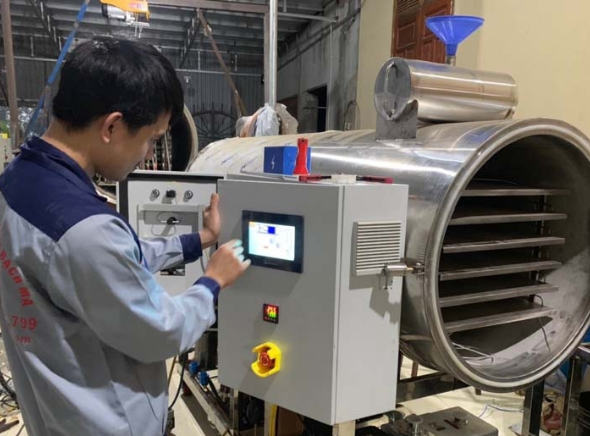



![[Case Study] DeAir Installs DeAir.De Rotor Humidity Control System for Pharmaceutical Plant in Binh Duong [Case Study] DeAir Installs DeAir.De Rotor Humidity Control System for Pharmaceutical Plant in Binh Duong](https://deair.com.vn/thumbs/news/2023_04/ban_giao_may_cho_duoc_bd/[270x153-cr]image1-1024x772.jpg__cv.webp)

![[Review & Guide] Olmas OS-300: The New Humidity Control "Warrior" for Medium to Large Warehouses [Review & Guide] Olmas OS-300: The New Humidity Control "Warrior" for Medium to Large Warehouses](https://deair.com.vn/thumbs/news/huong_dan_su_dung_may_olmas_21/[270x153-cr]vtm06440.png)